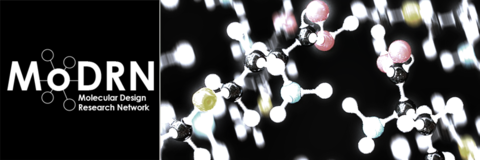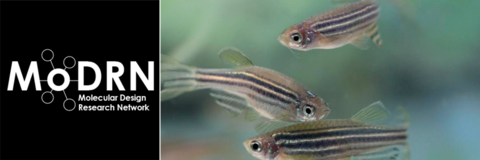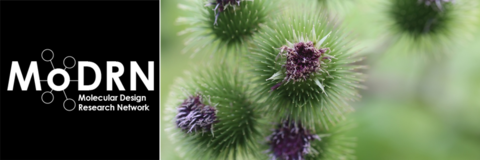REDOX Reactions
Introduction: Redox reaction is a short name for oxidation-reduction reactions. As the name implies, it involves two interdependent half reactions, oxidation and reduction. This type of reactions occurs naturally as part of the necessary processes in all biological systems. If they’re intervened by harmful chemicals, undesired consequences may follow. Therefore, it is necessary to understand the fundamental chemistry of redox reactions for the purpose of designing safer chemicals.
Learning Outcomes: By the end of this module, the student will be able to:
- Define reduction and oxidation
- Recognize the role of reduction potential in the flow of electrons
- Describe the Nernst equation
- Identify REDOX reactions in biological systems
Background and Information: There are two key players, oxidants and reductants, in a redox reaction, connected by two indispensable processes, gaining and losing electrons. Oxidation refers to when the reductant loses electrons to the oxidant and itself gets oxidized. Reduction refers to when the oxidant gains electrons from the reductant and itself gets reduced. Clearly, oxidation and reduction need to take place at the same time.
HINT: One can use a simple mnemonic “OILRIG” to memorize the redox reactions. Oxidation Is Loss (of electrons). Reduction Is Gain (of electrons).
It is important to recognize that electron transfer process is directional. A natural question to ask is, what factors determine the flow direction of the electrons? To answer this question, we need to introduce the concept of reduction potential. Reduction potential is a measure of the tendency of a chemical species to gain electrons and therefore be reduced (reduced by its charge, not the number of electrons it has!). The higher the reduction potential, the stronger the power a chemical gaining electrons. Quantitatively, it can described by the Nernst equation.

One can view  as an intrinsic property of a chemical.
as an intrinsic property of a chemical.
Note that  is modulated by its environment to assume a specific value. A typical example of redox reaction is the Zn/Cu displacement reaction. In this case, metal Zn has lower reduction potential (-0.76 V) and thus gives up two electrons to a Cu cation. The Cu+ cation with higher reduction potential (0.34 V) thus acquires the electrons from Zn and thereby gets reduced. The reduction potential for Cu in the form of Nernst equation can be expressed as below.
is modulated by its environment to assume a specific value. A typical example of redox reaction is the Zn/Cu displacement reaction. In this case, metal Zn has lower reduction potential (-0.76 V) and thus gives up two electrons to a Cu cation. The Cu+ cation with higher reduction potential (0.34 V) thus acquires the electrons from Zn and thereby gets reduced. The reduction potential for Cu in the form of Nernst equation can be expressed as below.

Redox reactions are involved in numerous metabolic processes in living organisms. The life dependent energy production process is essentially a chain of oxidation reactions. Take glucose as an example. It is first oxidized into a pyruvate ion during glycolysis. Afterwards, pyruvate enters the citric acid cycle to complete its combustion reaction and produce 38 units of ATP. Another example of step-wise enzymatic oxidation reactions is alcohol metabolism, which leads to the final acid production throughout the chemical reactions it undergoes toward the final product. Importantly, it is critical to maintain interacellular redox homeostasis, which is the balanced state between reductants and oxidants, for the sake of cell survival. Excessive amount of redox active chemicals, such as reactive oxygen species, can overthrow this balance and lead to cellular disease conditions or death. In this way, then, chemical reduction potential is an informative parameter to consider when designing safer chemicals.
Video: Dr. Paul Anastas, Director, Center for Green Chemistry and Green Engineering & Teresa and H. John Heinz III Professor in the Practice of Chemistry for the Environment, School of Forestry & Environmental Studies, Yale University
Assignments:
1. Using Nernst equation to calculate the reduction potential of hydrogen peroxide at pH 2, 4, and 6. Explain why the results differ between each other or not.

2. Find an example in biological system in which redox reactions are involved and identify the reductants/oxidants for each step.
REDOX Reactions Answer Key #1 found HERE.
Click here to evaluate this module.
Resources:
- UC Davis ChemWiki. (2015). Oxidative-Reduction Reactions. Retrieved from http://chemwiki.ucdavis.edu/Analytical_Chemistry/Electrochemistry/Redox_Chemistry/Oxidation-Reduction_Reactions
- Interactive Concepts in Biochemistry. (2002). REDOX Reactions. Retrieved from http://www.wiley.com/college/boyer/0470003790/reviews/redox/redox.htm
- Timberlake, K. C. (2014). An Introduction to General, Organic and Biological Chemistry. 12th ed. Prentice Hall Publishers.
- Atkins, P. & de Paula, J. (2014). Physical Chemistry. 10th ed. W.H. Freeman Publishers.
This material is based upon work supported by the NSF Division of Chemistry and the Environmental Protection Agency under Grant No. 1339637.









